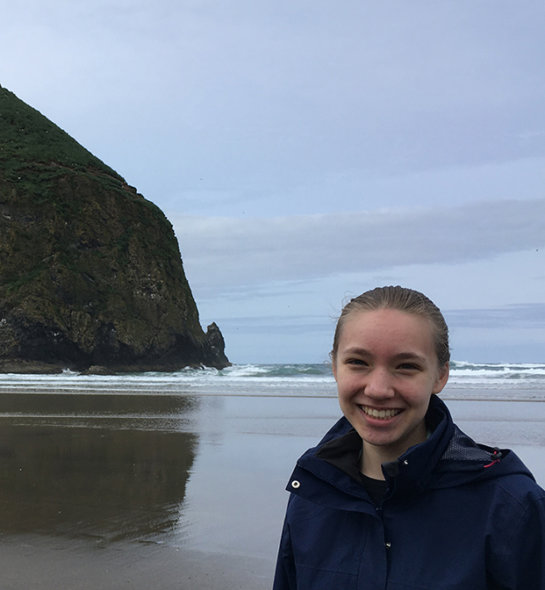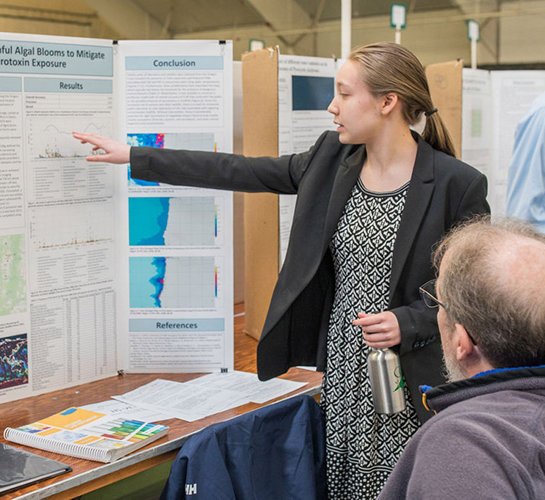Deeper Dive
When I learned that Alfred Hitchcock’s classic movie, The Birds, was inspired by a real-life event in which birds ingested marine biotoxins that had moved up the food chain, I wanted to know if these biotoxins could be found along the Oregon Coast and in local shellfish. Ingesting high levels of these toxins can produce mild to moderate gastrointestinal/neurological symptoms—or in severe cases, death. My goal was to accurately predict when and where these biotoxins produced by harmful algal blooms might occur because such blooms are continuing to expand worldwide.
Unique to my independent research was the inclusion of two decades of previously unexplored and non-digitized shellfish biotoxin data that was retrieved from archival storage at the Oregon Department of Agriculture Food Safety Division. By combining these archived biotoxin data with publicly available NASA satellite data, my study was able to successfully predict high levels of biotoxins. As such, my predictive models offer a more direct, efficient, and accurate method for forecasting biotoxin levels.
These predictive models may be able to reduce toxin exposure and save lives by providing advance notice to individuals and communities as to the best times and locations for recreational shellfish harvesting. And because satellite data is collected across the globe, the customization of such models for other areas, especially those that lack sufficient resources to routinely test shellfish, could provide easily-implemented solutions for reducing biotoxin exposure worldwide.



